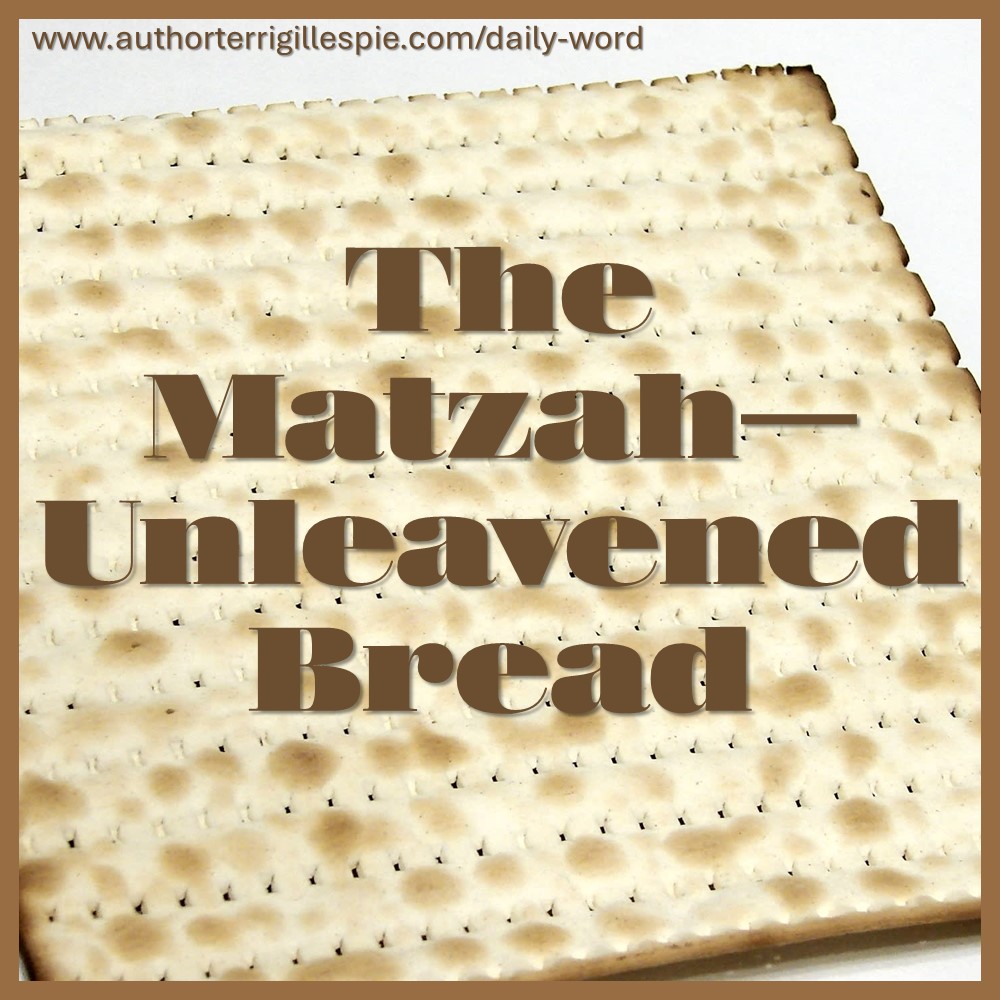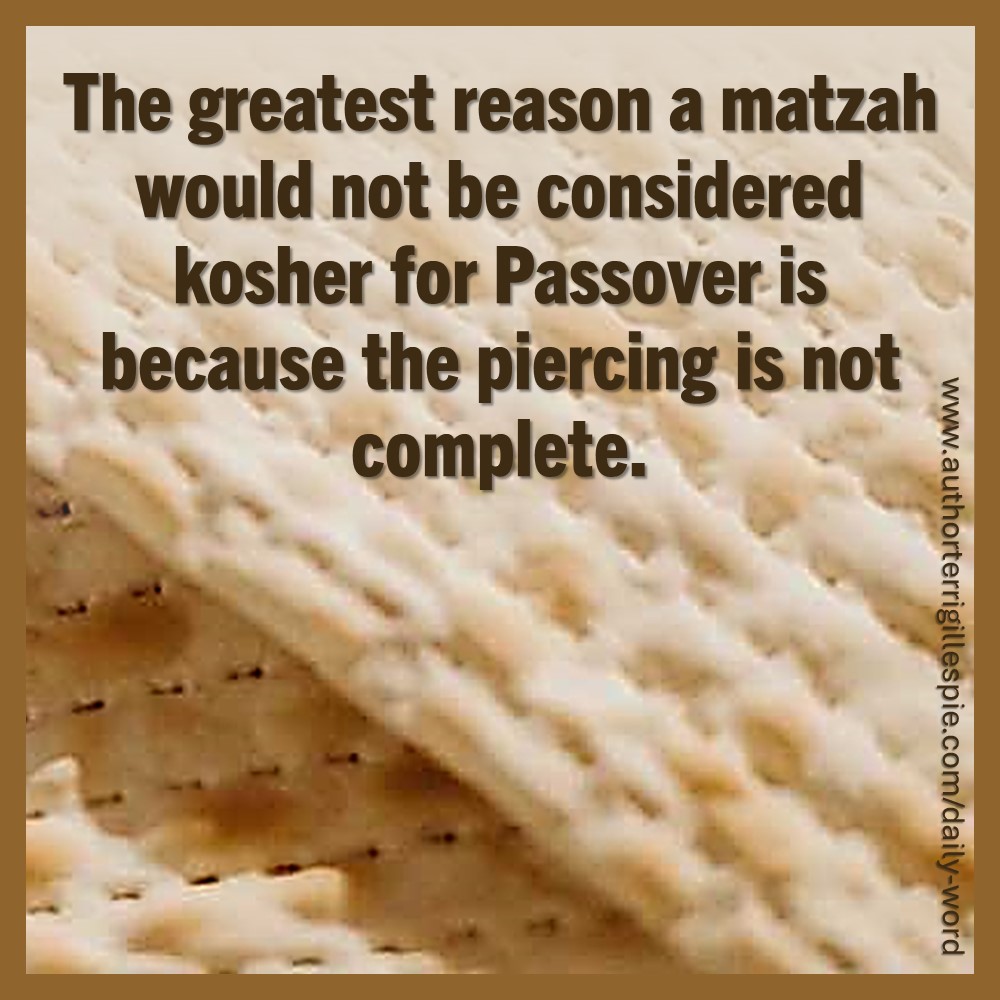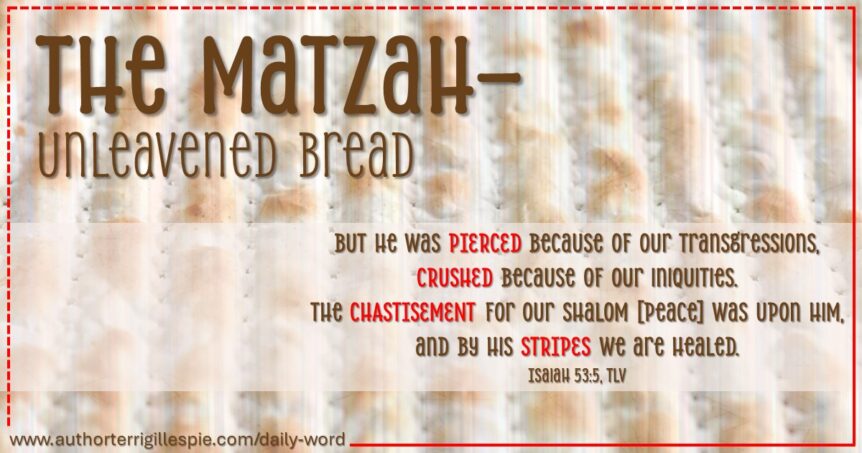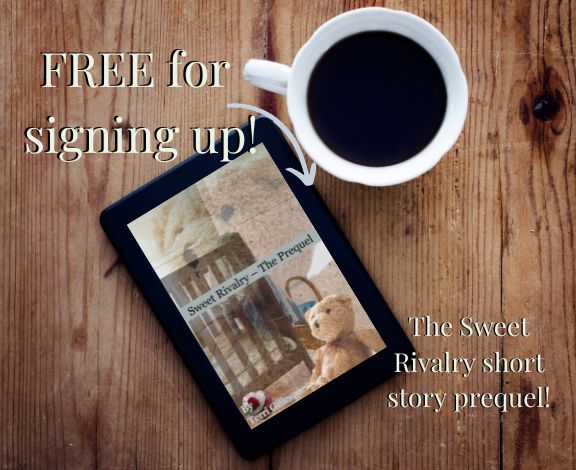But He was PIERCED because of our transgressions,
CRUSHED because of our iniquities.
The CHASTISEMENT for our shalom [peace] was upon Him,
and by His STRIPES we are healed. Isaiah 53:5, TLV
 The Matzah—Unleavened Bread. You might think I’m confused. Didn’t we already talk about Yeshua’s crucifixion? Why am I bringing it up again? The crucifixion of Jesus was actually during Passover, so technically because this is the season of Passover, this is the more accurate timing of God’s Son’s sacrifice.
The Matzah—Unleavened Bread. You might think I’m confused. Didn’t we already talk about Yeshua’s crucifixion? Why am I bringing it up again? The crucifixion of Jesus was actually during Passover, so technically because this is the season of Passover, this is the more accurate timing of God’s Son’s sacrifice.
But that’s not what this devotion is about. Today, we’re talking about Matzah—the unleavened bread. Right now, we’re celebrating the Feast of Unleavened Bread (Leviticus 23:4-8). After eight days, observant believers in Yeshua (Jesus) along with other Jewish souls will re-introduce leaven — yeast or any rising agent — back into their diets.
Our family celebrates Passover and the Feast of Unleavened Bread, and like our brothers and sisters in Israel—and around the world, we will go back to leaven in our diet at sundown on the 30th. (Although, after nearly 30 years of celebrating, we find that we use less and less yeasted foods. Go figure.)
Have you ever visited the Kosher/Jewish section of your local grocery store? One can buy matzoh/matzah or unleavened bread all year long. But Passover matzah is different than regular matzah.
They are to eat the meat that night, roasted over a fire. With matzot [plural for matzah] and bitter herbs they are to eat it. Exodus 12:8, TLV (notation mine)
Passover matzot must have these four qualities:
- Only ingredients flour and water. (No leavening agents such as yeast, baking soda or powder, etc. or flavorings)
- Made quickly (after over thousands of years, the optimum time before flour and water rises on its own, is 18 minutes).
- Pierced completely through (so that if you lifted the matzah to the light, you could see through the piercing).
- Baked in a 500-degree oven or over fire giving the matzah its distinctive striping marks.
The greatest reason a matzah would not be considered kosher for  Passover is because the piercing is not complete. Compelling similarities to our Messiah’s torture and death, wouldn’t you say?
Passover is because the piercing is not complete. Compelling similarities to our Messiah’s torture and death, wouldn’t you say?
Get rid of the old hametz [leaven], so you may be a new batch, just as you are unleavened—for Messiah, our Passover Lamb, has been sacrificed. Therefore, let us celebrate the feast not with old hametz, the hametz of malice and wickedness, but with unleavened bread—the matzah of sincerity and truth. 1 Corinthians 5:7-8, TLV
The context of Paul’s message to the believers in Corinth is that they were caught in the sins of sexual immorality, idolatry, greed . . . well, you get the idea, sin. Paul refers to hametz as a representation of sin—as I wrote about in yesterday’s devotion. Paul explains that our Passover Lamb was sinless, without hametz — leaven.
Then the governor’s soldiers took Yeshua into the Praetorium and gathered the whole cohort around Him. They stripped Him and put a scarlet robe around Him. And after braiding a crown of thorns, they placed it on His head and put a staff in His right hand. And falling on their knees before Him, they mocked Him, saying, “Hail, King of the Jews!” They spat on Him, and they took the staff and beat Him over and over on the head. Matthew 27:27-30, TLV
Jesus took brutal beatings from the time He was “captured” in the Garden. His body was striped with His blood. The scourging was unbearable. But because this was the reason He came — to atone for our sins — He bore it.
But one of the soldiers pierced His side with a spear, and immediately blood and water came out. John 19:34, TLV (Emphasis Mine)
His body was pierced as proof of Yeshua’s death.
“Then I will pour out on the house of David and the inhabitants of Jerusalem a spirit of grace and supplication, when they will look toward Me whom they pierced. They will mourn for Him as one mourns for an only son and grieve bitterly for Him, as one grieves for a firstborn.” Zechariah 12:10, TLV (Emphasis Mine)
 All of the Biblical Feasts (Leviticus 23) were intended to be reminders of the LORD’s mercy and miracles. They were also prophetic signposts to the coming Messiah and all He would do. As the Heavenly Father’s redeemed children, celebrating these Biblical Feasts creates profound opportunities to remind our children and grandchildren of thousands and thousands of years of His workings in our life. In fact, they were lesson plans for us to teach others — and ourselves — of the wonder of our Creator.
All of the Biblical Feasts (Leviticus 23) were intended to be reminders of the LORD’s mercy and miracles. They were also prophetic signposts to the coming Messiah and all He would do. As the Heavenly Father’s redeemed children, celebrating these Biblical Feasts creates profound opportunities to remind our children and grandchildren of thousands and thousands of years of His workings in our life. In fact, they were lesson plans for us to teach others — and ourselves — of the wonder of our Creator.
May we remember Isaiah 53, and all that our Messiah accomplished on our behalf — for our shalom — and live a “leaven-free” life.



